What Happens When Building Materials Don’t Like Each Other?
Be sure to research compatibility before mixing construction materials, because seemingly innocent pairings of different materials can lead to problems.

After chromated copper arsenate was withdrawn from the residential market as a wood preservative in 2004, builders soon learned that replacement chemicals posed their own risks. Copper-rich additives aggressively ate away at nails, screws, and hardware in a way that CCA never had.
The problem was galvanic corrosion, the erosion of one metal when it’s brought into contact with another in the presence of water. Builders now avoid the problem by using hardware and fasteners protected by zinc, certain polymers, or ceramics that isolate the steel from the copper. Deck builders started sleeping again at night.
Refer to manufacturers’ material-compatibility lists
Something similar may be brewing today, not with treated lumber but with the many water-resistant barriers, sealants, and building tapes that an increasing number of builders are using to keep water out of wall and roof assemblies. Some materials have the potential to react badly when brought together, leaving builders with problems they weren’t anticipating. As the number of products, and builders using them, continues to climb, the potential for problems goes up as well.
At least two window manufacturers, for example, suggest asphalt-based sealing tapes not be used on PVC nailing flanges, says Mike Guertin, a Rhode Island builder and editorial adviser at Fine Homebuilding magazine. The adhesives may liquefy and ooze as they react with the plasticizers in the PVC, Guertin said, a problem that was recognized some 10 years ago.
Marvin’s technical support center, in fact, explicitly warns against using flashing tape with asphalt-based adhesives to seal PVC nailing fins to the wall. What happens if you do? The vinyl fins can “disintegrate,” a technical representative said. The company recommends tapes with butyl adhesives.
“The problem I see is that most installers don’t read the instructions each time they install a window”
—Mike Guertin
Pella makes the same suggestion — butyl-based adhesives rather than asphalt-based adhesives. Jaden Vos, an architectural engineer with the company, said a poor reaction may hinge on how much plasticizers the nailing flanges contain. But to play it safe, he suggests butyl, which is what Pella chose when it developed its own line of foil-faced flashing tape.
“Most vinyl products I’m familiar with do not contain enough plasticizers to cause an issue,” he said, “but it is something that folks should be mindful of. Always look at the specs.”
Other window manufacturers were not as concerned. An Andersen representative said the type of flashing tape doesn’t matter, as did several other window manufacturers. The Window and Door Manufacturers Association, a trade group, says it is not aware of a compatibility issue with flashing tape and PVC nail flanges.
There are plenty of asphalt-based flashing tapes on the market. They include Vycor (GCP Applied Technologies), Tite-Seal (Cofair), ArcFlash (Polywall), Asphalt Flash (OSI), Flash-N-Wrap (Tamko), and FortiFlash (Henry), among others. Whatever window manufacturers may recommend, Guertin suspects that cost can be a driving factor when builders decide on what type of tape to use.
“The problem I see is that most installers don’t read the instructions each time they install a window,” Guertin said in an email, “so they don’t/didn’t notice the changes to the instructions and continue to use asphalt tapes (often because they are less pricey than the others, I’m guessing).”
The wrong mix of sealant and tape
Jake Bruton, a builder in Missouri specializing in high-performance custom homes, ran into a compatibility problem by accident but counts himself lucky that he did.
Bruton had been using Sashco’s Through the Roof! sealant to install windows, but until recently never in tandem with Huber’s Zip System stretch tape. His usual practice is to sheath the house, run a blower-door test, cut in the windows and then run another blower-door test. Recently, Bruton set a single casement window in a new house that had been sheathed with Zip System sheathing. After using Zip stretch tape to seal the perimeter of the opening, Bruton bedded the vinyl nailing flange of the window in a bead of Through the Roof! sealant and left the assembly overnight. The next day, Bruton ran another blower-door test and found leakage rates much higher than he would have guessed.
“We decided to pull the window to see if we could figure out what was going wrong, what we had screwed up,” he said. “The Sashco Through the Roof! had completely disintegrated the Zip tape, so we weren’t getting a good air-seal. The Zip tape had literally melted away and shriveled into tiny pieces.”
Bruton contacted Huber and was told he should be using a sealant on the company’s approved list. Although he had installed hundreds of windows with the Sashco sealant with “great results,” not until then had he paired the sealant with Zip stretch tape.
“The manufacturers are aware of this and Sashco Through the Roof! is not one of their approved sealants, so it’s our fault that we didn’t do the research and realize we were using something that was outside the realm,” Bruton said.
Nick Robertson, a tech service representative for Huber, said Zip products are compatible with 100% silicone, butyl, and polyurethane caulks. But the high solvent content of Saschco’s sealant was, in this case at least, the root of the problem..
A Sashco representative said Through the Roof! sealant contains both naphtha and toluene solvents. Although she had no specific information on contact with Zip System tapes, Sashco warns that Through the Roof! should not be brought into contact with EPDM, which may be damaged.
What about water-resistive barriers?
Water-resistive barriers (WRBs) come in several varieties, as Brian Pontolilo detailed in this article in FHB #285. Some are applied to sheathing with cap nails while others are fully adhered to the sheathing after a backing has been pulled away. Compatibility with sealants can be an issue, according to several manufacturers.
DuPont, for example, has issued a technical bulletin on the compatibility of sealants with Tyvek Weatherization System products, including housewraps and fluid-applied membranes and flashings. “The chemical compatibility of sealants and weatherization products is important to ensure the effective long-term performance and durability of a wall assembly,” it says in part.
Rather than warn builders away from certain types of sealants, the company lists by name the sealants that have been tested with its products and been approved for use with them. They include silicone, polyurethane, hybrids, acrylics, and synthetic rubber and butyl sealants from a dozen or so different manufacturers. For specific questions on other sealants, the company suggests contacting a local Tyvek representative. (After I placed a call to the company, I was contacted by a representative who lives just a few towns away — he had pulled his car to the side of the road in order to get in touch.)
Henry has issued a similar bulletin for its Blueskin housewrap, suggesting that builders avoid bringing it into contact with PVC membranes and gaskets.
“If the asphalt side of the Blueskin is placed in contact with PVC, the plasticizers in the PVC is [sic] attracted to the asphalt,” the Tech-Talk bulletin says. “The plasticizer then renders the asphalt very plastic or liquid, to the point where the asphalt can become liquid and flow. The reaction is accelerated by an increase in temperature.”
Products to avoid include General Polymers, Geon 8700x, Duradek vinyl deck membrane, and PVC roofing membranes such as those manufactured by Sarnafil.
VaproShield, a vapor-open membrane used in walls and roofs, publishes a chart listing more than two dozen sealants and adhesives and whether they are compatible with their products. The products are listed by manufacturer and brand name. The company refers to a specific adhesion test (ASTM C794) in which adhesives and sealants are allowed to dry and then peeled away from the substrate. Most of the sealants that were tested were compatible with VaproShield products, but some from Sika, Tremco, BASF, and Bostik were not.
“The results reported here are not considered a substitute for project-specific field or laboratory adhesion testing,” the accompanying note says. “Project-specific adhesion testing is always recommended.”
Ask or test yourself
The sheer number and variety of sealing products makes it all but impossible to predict the outcome of every pairing. In installing a window, for example, there is the WRB, the nailing flanges, sealant, and flashing tape all interacting in some way. To make it more complicated, flashing tape may come into contact with sealant before the sealant has had a chanced to cure.
“This is one of those situations where there are several products all coming together at one point and each product has its own instructions,” Guertin said, “WRB mfg, sealant mfg, window mfg (and component suppliers), flashing tape mfg. I guess you could add fastener mfg and trim/siding mfg too. Lots of stuff coming together in one small spot.”
The obvious conclusion is not to pair products from different manufacturers unless they have been approved for contact with each other, or you have tested them yourself on a job site and are comfortable with the results. Manufacturers seem to have tested some products, but clearly can’t be expected to test all of them. And the results, as Jake Bruton discovered, can sometimes be unpleasant.
“Had we not been experimenting when we used that product for the first time with Zip sheathing and Zip tape, we would have had a whole house we would have had to redo because we would have figured out real quick that it had ruined our waterproofing and our air barrier,” Bruton said.
Fine Homebuilding Recommended Products
Fine Homebuilding receives a commission for items purchased through links on this site, including Amazon Associates and other affiliate advertising programs.

The New Carbon Architecture: Building to Cool the Climate

Graphic Guide to Frame Construction

All New Bathroom Ideas that Work


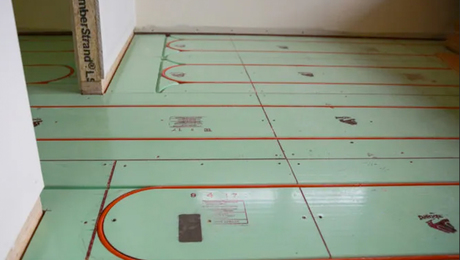
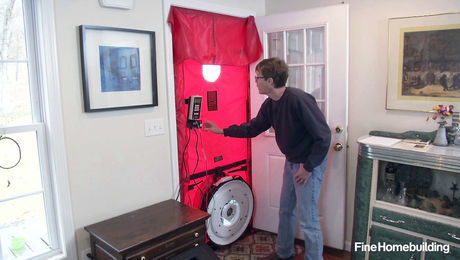
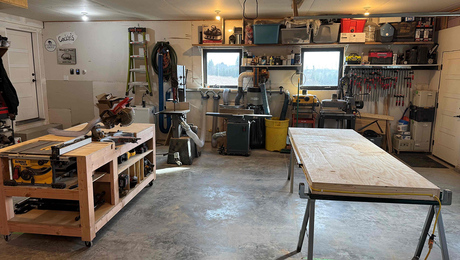









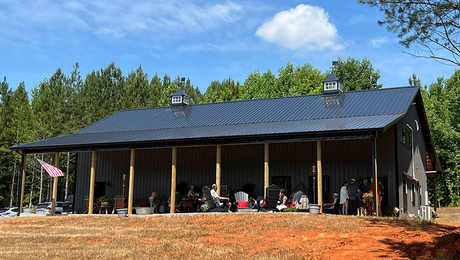
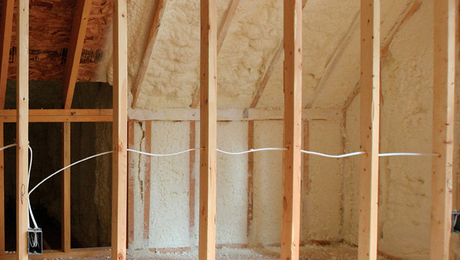
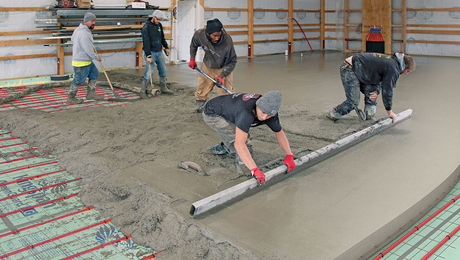












View Comments
The Blueskin Tech Talk bulletin is irritatingly ambiguous. There are quite a few different offerings from Henry all with the Blueskin name on them but have different types of adhesives. Blueskin SA is an SBS rubberized asphalt compound and VP100 is a "patented permeable adhesive technology." Whatever that means?!?!
Great article, Scott et al. Definitely do the research on what you are buying and sticking!